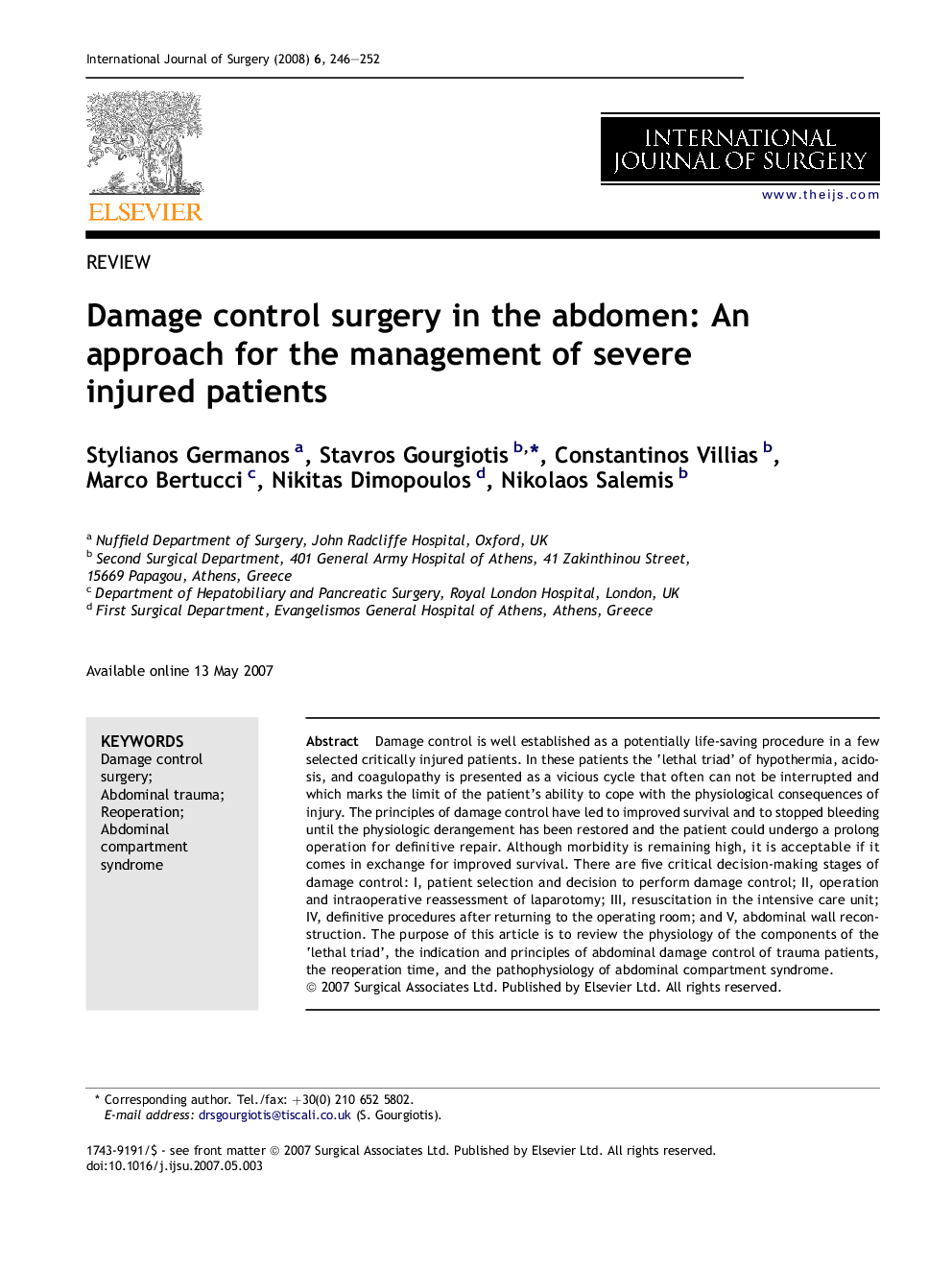| Article ID | Journal | Published Year | Pages | File Type |
|---|---|---|---|---|
| 4287409 | International Journal of Surgery | 2008 | 7 Pages |
Damage control is well established as a potentially life-saving procedure in a few selected critically injured patients. In these patients the ‘lethal triad’ of hypothermia, acidosis, and coagulopathy is presented as a vicious cycle that often can not be interrupted and which marks the limit of the patient's ability to cope with the physiological consequences of injury. The principles of damage control have led to improved survival and to stopped bleeding until the physiologic derangement has been restored and the patient could undergo a prolong operation for definitive repair. Although morbidity is remaining high, it is acceptable if it comes in exchange for improved survival. There are five critical decision-making stages of damage control: I, patient selection and decision to perform damage control; II, operation and intraoperative reassessment of laparotomy; III, resuscitation in the intensive care unit; IV, definitive procedures after returning to the operating room; and V, abdominal wall reconstruction. The purpose of this article is to review the physiology of the components of the ‘lethal triad’, the indication and principles of abdominal damage control of trauma patients, the reoperation time, and the pathophysiology of abdominal compartment syndrome.
